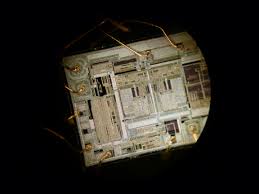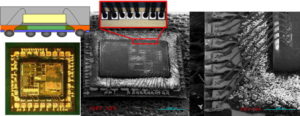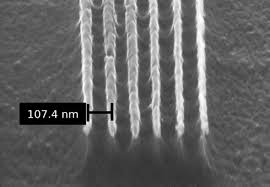Crack IC ATmega324V Binary
Crack IC ATmega324V Binary starts from decapsulate the polysilicon package of the Microcontroller, and use laser cutter to take of the security fuse bits and reset the status of MCU from locked to Unlocked one;
The internal PLL in ATtiny15L generates a clock frequency that is 16x multiplied from the RC oscillator system clock. If the RC oscillator frequency is the nominal 1.6 MHz, the fast peripheral clock is 25.6 MHz.
The fast peripheral clock, or a clock prescaled from that, can be selected as the clock source for Timer/Counter1. The PLL is locked on the tunable internal RC oscillator and adjusting the tunable internal RC oscillator via the OSCCAL register will adjust the fast peripheral clock at the same time.
Timer1 may malfunction if the internal RC oscillator is adjusted beyond 1.75 MHz. It is recommended not to take the OSCCAL adjustments to a higher frequency than 1.75 MHz in order to keep proper operation of all chip functions.
The ATtiny15L provides two general purpose 8-bit Timer/Counters. The Timer/Counters hav e se par ate p re sc al ing s ele cti on fr om s epar at e 1 0- bit pres calers.
The Timer/Counter0 uses internal clock (CK) as the clock time base which can be applied for IC code extraction. The Timer/Counter1 may use either the internal clock (CK) or the fast peripheral clock (PCK) as the clock time base.
The four prescaled selections are: CK/8, CK/64, CK/256, and CK/1024, where CK is the oscillator clock. CK, external source and stop, can also be selected as clock sources.
Setting the PSR10 bit in SFIOR resets the prescaler. This allows the user to operate with a predictable prescaler. Figure 19 shows the Timer/Counter1 prescaler.
For Timer/Counter1 the clock selections are: PCK, PCK/2, PCK/4, PCK/8, CK (=PCK/16), CK/2, CK/4, CK/8,CK/16, CK/32, CK/64, CK/128, CK/256, CK/512, CK/1024, and stop. The clock options are described in Table 12 on page 32 and the Timer/Counter1 Control Register (TCCR1).
Setting the PSR1 bit in the SFIOR register resets the 10-bit prescaler. This allows the user to operate with a predictable prescaler.
Tags: crack ic dump archive,crack ic dump binary,crack ic dump code,crack ic dump content,crack ic dump data,crack ic dump eeprom,crack ic dump file,crack ic dump firmware,crack ic dump heximal,crack ic dump information,crack ic dump program





